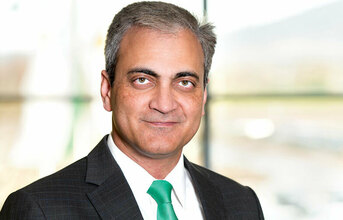
Apart from automotive, the company is also working in areas such as railways. Speaking about it, Arora stated, "Indian Railways transports over nine billion passengers and over one billion freight tons per year. The government has recently announced the development of dedicated freight corridors that require trains with a high axle load-carrying capacity and high reliability. Since the inception of FAG India over 50 years ago, Indian Railways has been an important customer. With a strong local footprint, FAG India is recognised as the most reliable source for critical railway applications such as axlebox bearings as well as traction motor and gearbox bearings."
With the local and global key players present in India, the new Government supports a strong development of Renewable Energies. Schaeffler India offers a full range of main shaft and gearbox bearings for wind power applications. Large size
bearings with up to one meter outer diameter are produced locally at the Savli Plant.
Expansion plans
The company plans to expand its Savli as well as Talegaon plants. The Talegaon plant caters to the automotive market while Savli plant serves needs of the railways and metro rails' requirements. At Talegaon the company plans to build a
Schaeffler India Advance Automotive Technology Lab, while an investment of Euro 12.5 million is planned at Hosur. "The new facility will enable us to offer high end ‘Fit to Market' technology, locally assembled systems to the Indian Automotive Industry with a scope of lowering NVH level as well as improving drivability," Arora revealed.
He also said, "Over the next 2-3 years, we are investing €80 million (Rs. 5840 million) in operations, innovation and localization to bring new solutions to our customers as we jointly address the unique challenges of the Indian market. This includes, €25 million (Rs. 1825 million) we are investing over the next two years in Pune to introduce the latest technologies in the area of engines, transmission & chassis."
Moreover, the company believes that R&D is one of the important pillars in its success. "We plan to invest 10 percent of all new investment in R&D and in building advanced engineering competence by adding new facilities for product validation
(simulation & testing), localisation of product design & machinery and labs for product testing," Arora explained.
END


























